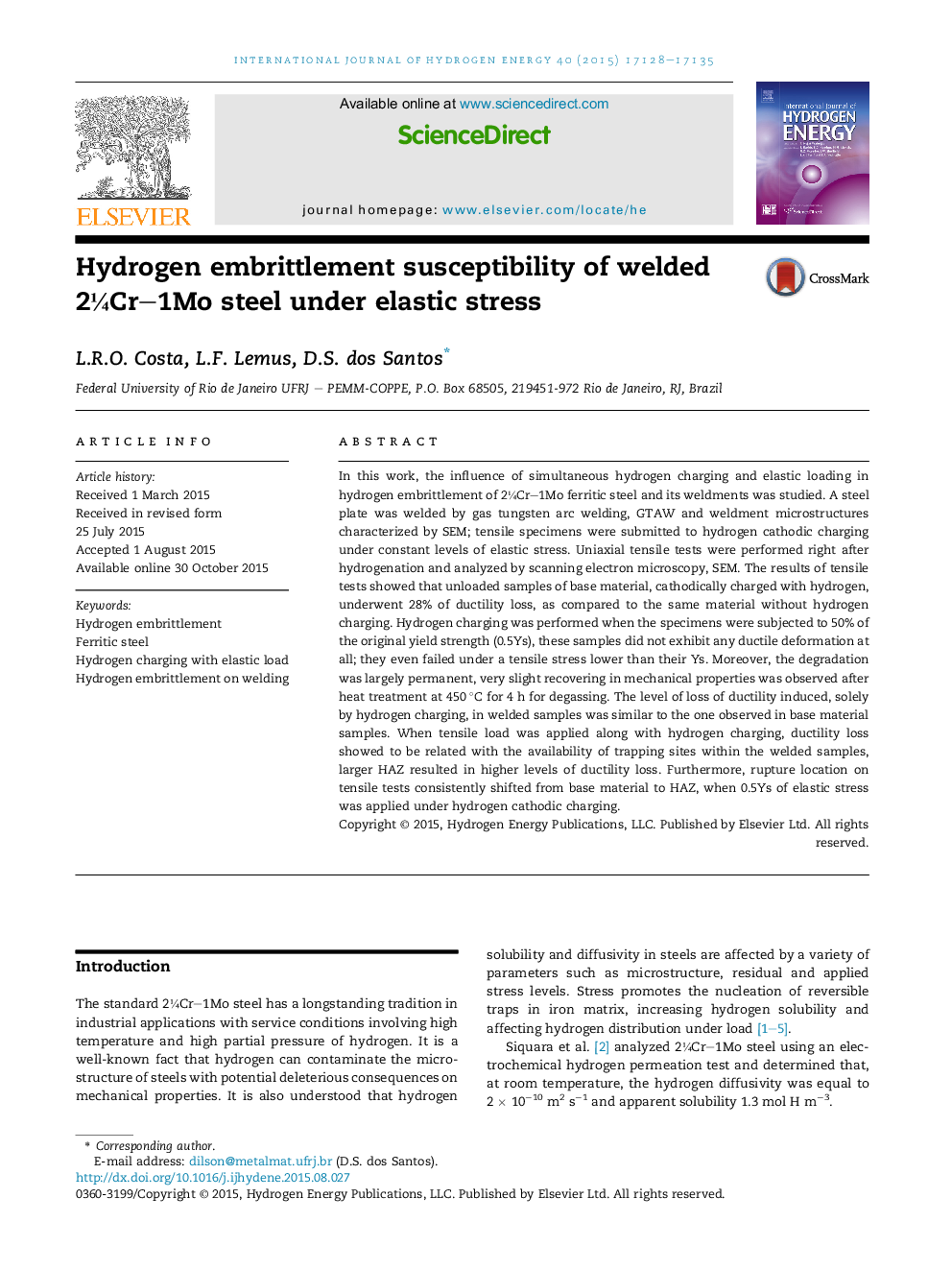| Article ID | Journal | Published Year | Pages | File Type |
|---|---|---|---|---|
| 1278412 | International Journal of Hydrogen Energy | 2015 | 8 Pages |
•Hydrogen charging in 2.25Cr–1Mo steel welded joint under elastic stress.•Hydrogen embrittlement 2.25Cr–1Mo steel welded joint.•Hydrogen solubility and trap in a 2.25Cr–1Mo steel welded joint.
In this work, the influence of simultaneous hydrogen charging and elastic loading in hydrogen embrittlement of 2¼Cr–1Mo ferritic steel and its weldments was studied. A steel plate was welded by gas tungsten arc welding, GTAW and weldment microstructures characterized by SEM; tensile specimens were submitted to hydrogen cathodic charging under constant levels of elastic stress. Uniaxial tensile tests were performed right after hydrogenation and analyzed by scanning electron microscopy, SEM. The results of tensile tests showed that unloaded samples of base material, cathodically charged with hydrogen, underwent 28% of ductility loss, as compared to the same material without hydrogen charging. Hydrogen charging was performed when the specimens were subjected to 50% of the original yield strength (0.5Ys), these samples did not exhibit any ductile deformation at all; they even failed under a tensile stress lower than their Ys. Moreover, the degradation was largely permanent, very slight recovering in mechanical properties was observed after heat treatment at 450 °C for 4 h for degassing. The level of loss of ductility induced, solely by hydrogen charging, in welded samples was similar to the one observed in base material samples. When tensile load was applied along with hydrogen charging, ductility loss showed to be related with the availability of trapping sites within the welded samples, larger HAZ resulted in higher levels of ductility loss. Furthermore, rupture location on tensile tests consistently shifted from base material to HAZ, when 0.5Ys of elastic stress was applied under hydrogen cathodic charging.
